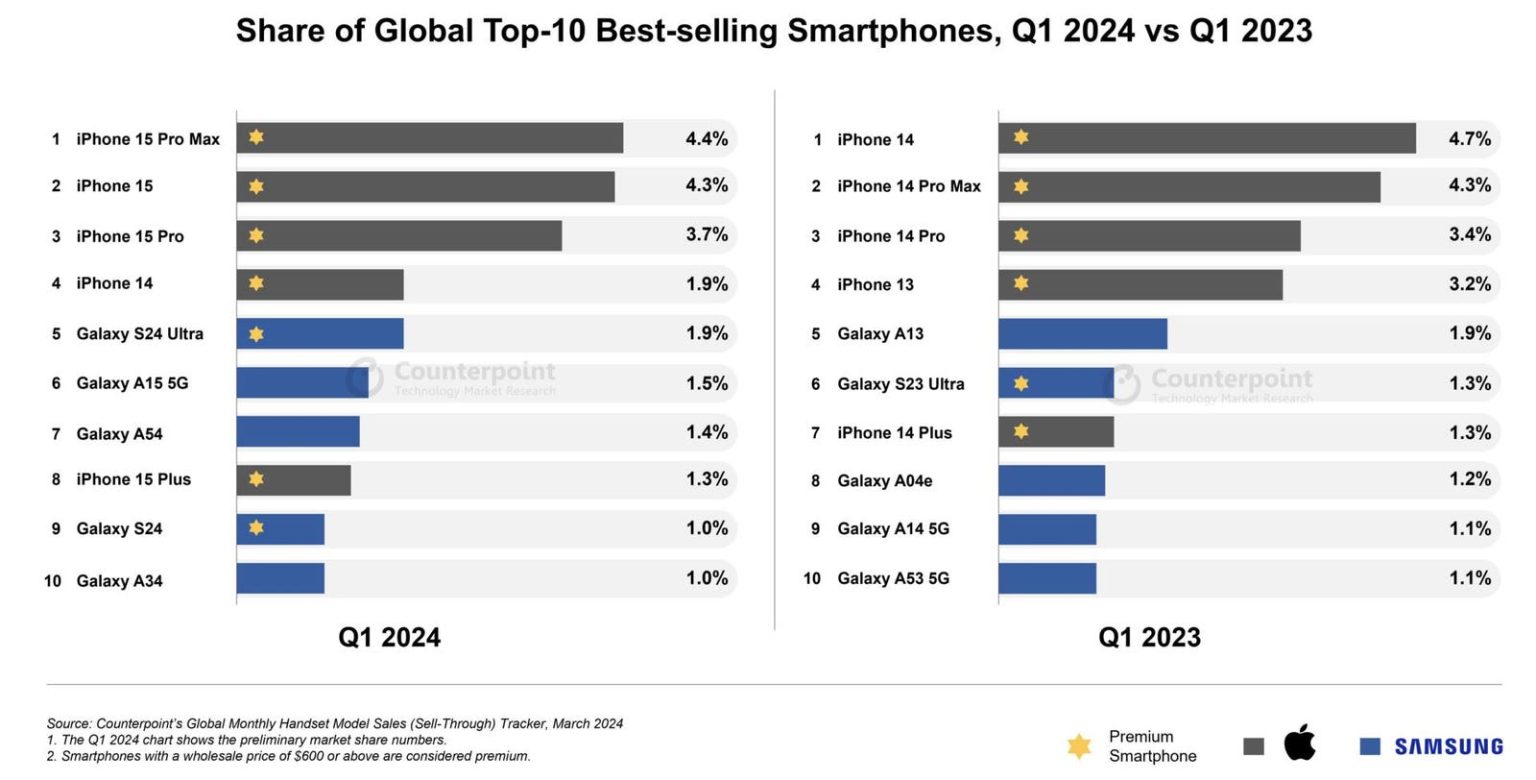The latest report from Counterpoint Research reveals that Apple and Samsung continue to dominate the global smartphone market, with every single one of the top ten best-selling smartphones coming from these two companies. One notable change is the increasing popularity of Apple’s pricy Pro line, which now represents half of all iPhone sales, up from 24% in 2023. Apple’s larger Max models are also gaining traction, indicating a growing preference for larger smartphones among consumers.
In the first quarter of 2024, the top ten best-selling models include four iPhones and four Samsung Galaxy models. The iPhone 15 Pro Max leads the pack with 4.4% of total smartphone sales, followed closely by the iPhone 15 and iPhone 15 Pro. Samsung’s high-end Galaxy S24 Ultra also performed well, thanks to early refreshes and innovative technology like generative AI (GenAI) features that enhance user experience and content creation.
Despite the success of high-end models, the trend towards more expensive smartphones has resulted in consumers holding onto their devices for longer periods, leading to slower upgrade cycles for manufacturers like Apple and Samsung. However, Q1 2024 saw the highest smartphone revenue of any first quarter in history, indicating a growing global market with almost 300 million units shipped. Lower-end and more affordable options like the iPhone 14 and Samsung’s Galaxy A series continue to attract consumers, highlighting the diversity of the smartphone market.
As smartphone sales become more challenging, Apple is shifting its focus towards services that offer added value to consumers regardless of their device. In the recent quarterly earnings report, Apple surpassed expectations with $23.9 billion in services revenue, offsetting a flat quarter of $46 billion in iPhone sales. However, concerns arise as Apple’s new sales in the U.S. hit a six-year low, indicating potential challenges in one of its key markets.
Overall, the duopoly of Apple and Samsung in the smartphone market remains strong, with both companies adapting to changing consumer preferences and market dynamics. The continuous innovation in technology and features, such as AI enhancements and larger screen sizes, has contributed to the success of their flagship models. While the trend towards more expensive smartphones poses challenges in terms of upgrade cycles, the growing global smartphone market presents opportunities for manufacturers to explore new revenue streams and maintain their competitive edge.













